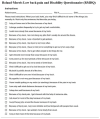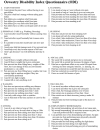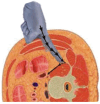Evaluation and Rehabilitation after Adult Lumbar Spine Surgery
- PMID: 38792457
- PMCID: PMC11122457
- DOI: 10.3390/jcm13102915
Evaluation and Rehabilitation after Adult Lumbar Spine Surgery
Abstract
Purpose: With an increase in the proportion of elderly patients, the global burden of spinal disease is on the rise. This is gradually expected to increase the number of surgical procedures all over the world in the near future. As we know, rehabilitation following spine surgery is critical for optimal recovery. However, the current literature lacks consensus regarding the appropriate post-operative rehabilitation protocol. The purpose of this review is to evaluate the optimal protocol for rehabilitation after lumbar spine surgery in adults. Materials and Methods: The goals of rehabilitation after lumbar spine surgery are to improve physical and psychosocial function and may include multiple modalities such as physical therapy, cognitive behavioral therapy, specialized instruments, and instructions to be followed during activities of daily living. In recent years, not only are a greater number of spine surgeries being performed, but various different techniques of lumbar spine surgery and spinal fusion have also emerged. (1) Our review summarizes post-operative rehabilitation under the following headings-1. Historical aspects, 2. Subjective functional outcomes, and (3) Actual rehabilitation measures, including balance. Results: Physical therapy programs need to be patient-specific and surgery-specific, such that they consider patient-reported outcome measures and take into consideration the technique of spinal fusion used and the muscle groups involved in these surgeries. By doing so, it is possible to assess the level of functional impairment and then specifically target the strengthening of those muscle groups affected by surgery whilst also improving impaired balance and allowing a return to daily activities. Conclusions: Rehabilitation is a multi-faceted journey to restore mobility, function, and quality of life. The current rehabilitation practice focuses on muscle strengthening, but the importance of spinal balance is less elaborated. We thus equally emphasize muscle strengthening and balance improvement post-lumbar spine surgery.
Keywords: lumbar surgery; muscle exercise; physiotherapy; rehabilitation.
Conflict of interest statement
The authors declare no conflicts of interests. The funders had no role in the design of the study; in the collection, analyses, or interpretation of data; in the writing of the manuscript; or in the decision to publish the results.
Figures


















Similar articles
-
Rehabilitation to Improve Outcomes after Cervical Spine Surgery: Narrative Review.J Clin Med. 2024 Sep 10;13(18):5363. doi: 10.3390/jcm13185363. J Clin Med. 2024. PMID: 39336849 Free PMC article. Review.
-
Decision making in surgical treatment of chronic low back pain: the performance of prognostic tests to select patients for lumbar spinal fusion.Acta Orthop Suppl. 2013 Feb;84(349):1-35. doi: 10.3109/17453674.2012.753565. Acta Orthop Suppl. 2013. PMID: 23427903
-
The effect of prior lumbar surgeries on the flexion relaxation phenomenon and its responsiveness to rehabilitative treatment.Spine J. 2014 Jun 1;14(6):892-902. doi: 10.1016/j.spinee.2013.07.442. Epub 2013 Nov 15. Spine J. 2014. PMID: 24246746
-
Lumbar spinal fusion. Outcome in relation to surgical methods, choice of implant and postoperative rehabilitation.Acta Orthop Scand Suppl. 2004 Oct;75(313):2-43. Acta Orthop Scand Suppl. 2004. PMID: 15559781
-
Rehabilitation after cervical and lumbar spine surgery.EFORT Open Rev. 2023 Aug 1;8(8):626-638. doi: 10.1530/EOR-23-0015. EFORT Open Rev. 2023. PMID: 37526242 Free PMC article. Review.
Cited by
-
Lumbar Spinal Stenosis: Pathophysiology, Biomechanics, and Innovations in Diagnosis and Management.J Spine Res Surg. 2025;7(1):1-17. doi: 10.26502/fjsrs0082. Epub 2025 Feb 18. J Spine Res Surg. 2025. PMID: 40083985 Free PMC article.
-
Narrative Review on Postoperative Pain Management Following Spine Surgery.Neurospine. 2025 Jun;22(2):403-420. doi: 10.14245/ns.2550410.205. Epub 2025 Jun 30. Neurospine. 2025. PMID: 40625006 Free PMC article.
-
Preoperative Leg Muscle Quality Association Functional Recovery After Adult Spinal Deformity Surgery: A Propensity-Score-Matched Study.Medicina (Kaunas). 2025 May 26;61(6):980. doi: 10.3390/medicina61060980. Medicina (Kaunas). 2025. PMID: 40572670 Free PMC article.
-
Surgical and non-surgical management of spondylolisthesis: a comprehensive review.J Med Life. 2025 Mar;18(3):196-207. doi: 10.25122/jml-2025-0039. J Med Life. 2025. PMID: 40291940 Free PMC article. Review.
-
Guiding significance of the autophagy intensity of lumbar intervertebral discs and the Charlson Comorbidity Index in predicting the postoperative curative effect of patients with single-level lumbar disc herniation.Sci Rep. 2025 Jun 4;15(1):19662. doi: 10.1038/s41598-025-03539-x. Sci Rep. 2025. PMID: 40467648 Free PMC article.
References
Publication types
LinkOut - more resources
Full Text Sources
Research Materials

